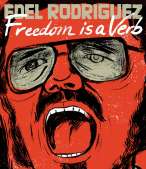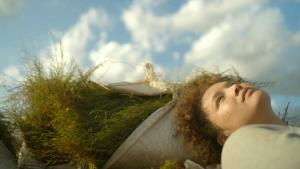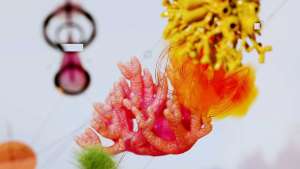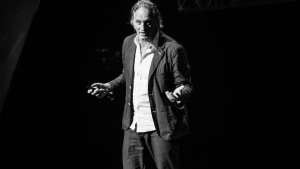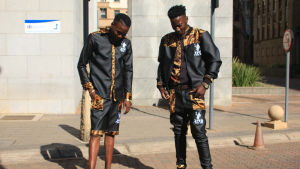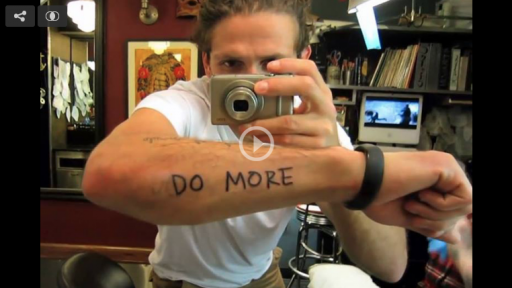To produce the series of works collectively titled FACTUM (2010), Candice Breitz conducted intensive interviews with seven pairs of identical twins and a single set of identical triplets in and around Toronto during the summer of 2009, footage from which she then edited seven dual-channel video installations (and one tri-channel video installation). Like Robert Rauschenberg’s near-identical paintings FACTUM I and FACTUM II (both 1957), from which the series borrows its title, each interviewee in FACTUM is an imperfect facsimile of their twin: their apparent identicality is soon disrupted by a host of subtle differences.
Breitz chose to work with monozygotic twins (and triplets) who spent their formative lives together and who thus draw on shared memories and experience. Each pair of twins was filmed over the course of one long day in a domestic environment designated by the twins – most chose to shoot in the home of one twin, or in their shared home. In each case, Breitz interviewed Twin A for approximately 5–7 hours in the absence of his/her sibling and then directed the same set of questions separately to Twin B. Designed to give each individual the opportunity to narrate his/her own story as s/he chose, the questions covered intimate areas such as childhood, sibling rivalry and family matters, but also zoomed out to allow each subject to address his/her relationship to the world at large.
Some questions were specifically slanted to shed light on the mysterious terrain of subject formation: the twins were asked to lend comment, for example, on the nature-nurture debate, or to offer their thoughts on evolution versus creation. Other questions invited the twins to share personal anecdotes or key memories. According to their level of comfort before the camera, some individuals were willing to enter into minute and graphic autobiographical detail, while others set distinct boundaries.
Each pair of twins was asked to style themselves as identically as possible for the camera, and left to decide how diligently they wished to fulfill the request. For some the superficial sameness that resulted – almost immediately to be undermined by innumerable small differences that manifest themselves throughout the interview – became an apt metaphor for the projections of sameness that they had been subject to all their lives.
Each pair of interviews was later woven together in the editing studio to create a somewhat stereoscopic dual-channel portrait. Breitz’s edits accentuate the push-and-pull relationship between the siblings. As the twins relate their stories, sharp distinctions in their voices, their attitudes, their body language, and their views on the world become apparent. At times they gravitate towards each other, offering almost the same syntax and gestures to describe memory, while at other moments they differ vastly in their conclusions on topics they both consider vital. Breitz’s presence is strongly tangible in each twin portrait – her jagged editing style distances the works from the truth claims of conventional documentary, suggesting that the intertwining forces of fact and fiction are always at play in auto/biography.
FACTUM raises questions not only about twinship per se, but also about the struggle that each individual must negotiate in defining him or herself as distinct, while facing constant reminders of the relative role of others in the process of self-definition.
The FACTUM series comprises FACTUM BRADLEY, FACTUM HAWKE, FACTUM JACOB, FACTUM KANG, FACTUM McNAMARA, FACTUM MISERICORDIA, FACTUM TANG and FACTUM TREMBLAY.
FACTUM TREMBLAY is usually shown as a dual-channel video installation on two vertically-mounted plasma displays hung alongside one another. For exhibition purposes, the footage loops endlessly without beginning or end. It will be screened for the first time in a cinema at The Bioscope Independent Cinema, Johannesburg on Saturday 5 and Sunday 6 September 2015.

